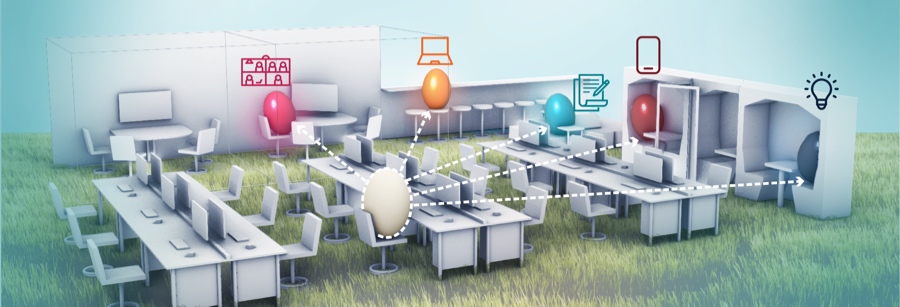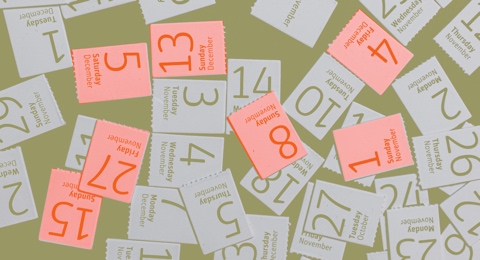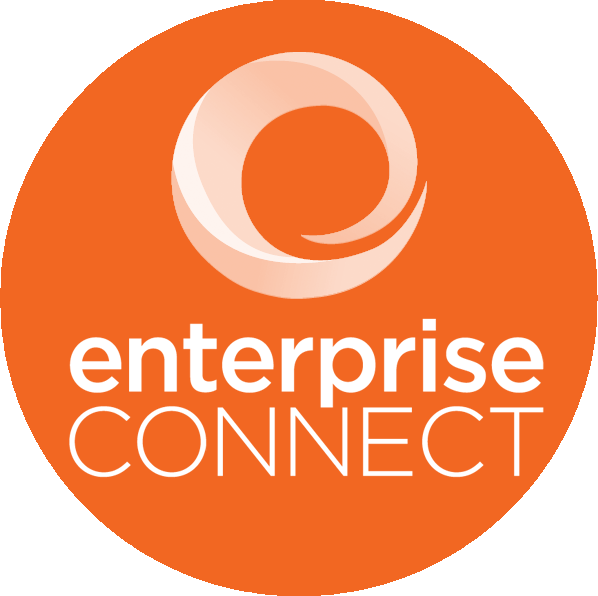Are There any Easter Eggs in Your Office?

Unleash Delight: Finding Hidden Gems in Your Workplace
When you hear “Easter eggs,” most likely, a very distinct image comes to mind: brightly dyed 12-per-carton eggs, hidden around a backyard, to be found by kids in ruffled clothes carrying wicker baskets. But if you were a game or set designer, it might have different connotations. And if you’re a building designer, perhaps it should as well. Perplexed but curious? Scroll down to On Our Minds to uncover what we mean.
On our minds
In 1977, the first “digital Easter egg” was hidden in the code of a game called Spitfire, played on Fairchild Channel F—a home console that predated Atari. In a flash-credit sequence that shows up only when the game is viewed in bit-per-pixel form, designer Michael Glass “signs” his work.
Two years later, Atari game designer Warren Robinett snuck his signature into a hidden room on a game called Adventure. It was found by a delighted young player, who wrote to Atari and reported his discovery. Soon after, Steven Spielberg hid references to Star Wars in his movie Raiders of the Lost Ark, to honor his pal George Lucas. Eventually Nintendo hid the names of contest winners in secret rooms of the game Zelda, and Microsoft designers buried flight and pinball simulators in Excel and Word programs. Easter eggs have also shown up in a Mac operating system and in films and TV shows.
They began as a nerdy, high-tech way to claim credit in industries that didn’t allow inpidual designers to be celebrated for their work. Later, they became more about fun—a sort of insiders message, from one techie to another. The “seek and find” became mostly about—cue the applause for one of PLASTARC’s favorite words—delight. It wouldn't have to end there. We could also use architectural features to better credit the thousands, and thousands of people who contribute to the design and construction of our buildings, more like the scrolling credits in movies.
If digital rooms have Easter eggs, shouldn’t real rooms have them, as well? People love commercial “escape rooms.” The global industry is projected to reach $32 billion by 2032. And what is an escape room but the embodiment of architectural Easter eggs? Secret compartments, hidden doors, puzzles and pattens, details visible only under black light or no-light, objects hidden within other objects—all of these are escape room essentials.
High-end residential design often includes Easter eggs—things like electronics and litter boxes tucked into furniture pieces, hidden closets or behind paintings; tucked-away kitchen amenities, secret safes and panic rooms. Retail spaces have excelled at such immersive, multisensory design. That’s because retail spaces are selling an “experience” and identity, as much as a product. But why doesn’t corporate design include such unexpected, awe-inspiring, site-specific moments?
Easter eggs can help transform an workplace into a “destination.” They can combat the burnout and boredom of going to the same place day after day, month in, month out. Pleasant surprises—even small ones, like fresh snacks and novel beverages—can make “heading to the office” less of a drag.
Workplace Easter eggs may include interactive art or sensors that release scents such as rosemary or sage (which improve memory and focus) when someone sits at a specific desk or walks through a certain hallway. Maybe one day, closing the door in the meditation room bathes the space in a soothing glow of colored light. Maybe the next day, the soothing light is a different color. Maybe there’s music, with the genre changing daily, even only in restrooms. Maybe you have “pop-up” food or exercise vendors, offering select cuisine or complementary classes during lunch on specific days—in a way that isn’t dictated ahead of time, by any schedule.
We’ve written about the importance of incorporating nooks and crannies in buildings, cozy spaces for an intimate chat or a moment of solitude. Discovering one of these nooks amidst an otherwise dull architectural feature - say, a hallway - compounds the delight of the space. It’s both interesting and “secret.” Other architectural surprises may include skylights, “framed” views, ceiling art, well-placed mirrors that make spaces slightly maze-like, changing floor or ceiling levels, and efficient built-ins.
Incorporating Easter eggs into physical design may be elaborate, but making them part of the workplace experience doesn’t have to be. Fostering an office pet, transforming your office roof or courtyard into a community garden, changing jokes regularly on a board in the break room, catering dinner when a team works late to meet a deadline, giving silly awards, delivering meeting agendas in AI-generated “Yoda-speak,” and mixing up the input (smells, tastes, sounds, etc.) in multisensory design can all achieve the dual goals of “surprise and delight,” without construction renovations or a lot of expense. These are the types of daily moments that make coming to the future workplace meaningful and worthwhile, that help employees cohere as a team, and that ensure “going to the office” offers something you can’t get through working at home or from a coffee shop.
From the archives
In March of 2020, we were deep in quarantine, and PLASTARC was focused on how to stay happy and healthy working from home. We were also curious about how social data would be used by AI in designing better buildings. The following year, we were busy collecting our own data. We wanted to know what people expect from their workplaces, as the world regained a sense of normalcy. Last March, we knew that not everyone is coming back to the office five days a week, so we hosted a webinar about making time in the office intentional.
And on that note, farewell to March and onward to April (Fools Day). Did you know that penguins fly and spaghetti grows on trees? Enjoy this hit list of the greatest hoaxes ever.
In Case You Missed It
Spring has a lot to offer, and it just keeps coming. This spring feels busier than usual! So, if you haven’t been able to keep up with it all, we’ve got you covered.

What’s in a Work Week?
Curious about the seven-day week, which, per the New Yorker, “organizes and tyrannizes our lives?” This piece covers how we got here and what it says about us.

Vacant Buildings May Not Be the Crisis They’re Billed As
US Office buildings remain half empty, but it will take years for the impact to reach municipal tax coffers. In that time, we can come up with contingency plans.

Working Four Days, Paid for Five
Sixty-one UK companies tested a four-day work week for a year, without cutting pay. Now, most of them are keeping it. They’ve found employee morale and retention is high, while client services haven’t suffered.

Human, Meet Machine
Cornell Tech just released a report on using generative AI in design. They not only focus on how AI is currently being used, but predicts how it will shape the industry in the near-future.
Looking Ahead
It’s spring in full-swing, and exciting things are happening here, there & all around.







